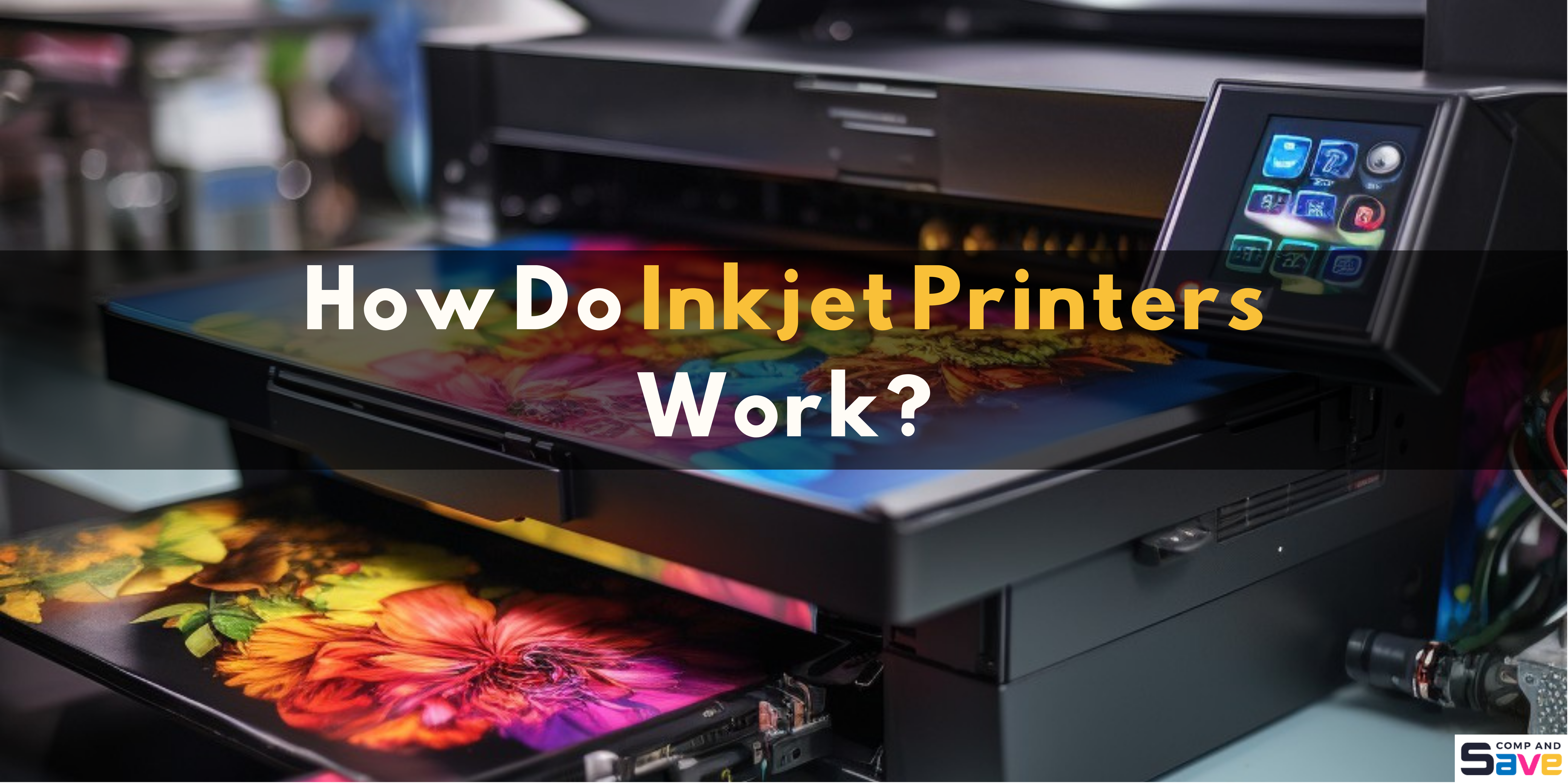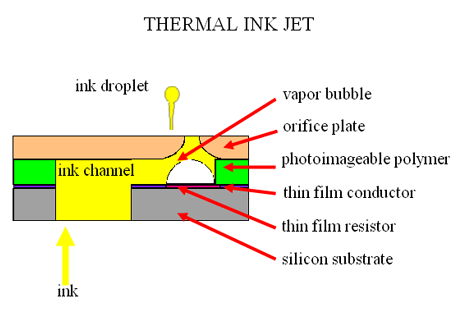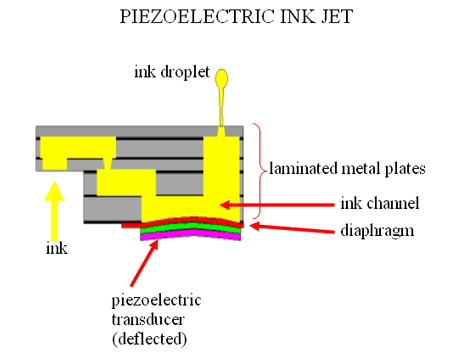How Do Inkjet Printers Work? Understanding Inkjet Technology
| Aug 19, 2024Inkjet printers are popular for their affordability and quality, comprising nearly 55% of global printer sales. They work by spraying tiny ink droplets onto paper, producing vibrant images and text. When comparing inkjet vs laser printers, the primary difference lies in how they produce prints. Knowing how do inkjet printers work can help you choose the right printing technology for your needs. Knowing how does inkjet printing work also enables you to optimize your printing tasks, ensuring better quality and longer-lasting prints.
In this blog, we will discuss:
- Inkjet Printer’s Core Components, and Printing Process.
- Best Inkjet Technology Applications and Usage
- Troubleshooting and Maintenance Tips.
How Do Inkjet Printers Work?: Fundamental Mechanism
Inkjet printers operate through a simple yet sophisticated process. They convert digital images into physical prints by carefully controlling the release of ink droplets onto paper. Let’s understand how do inkjets work by breaking down the essential components and steps involved.
How Does Inkjet Printing Work? An Overview
- Image Processing: The printer receives a digital image from your computer or device.
- Paper Loading: The paper feed mechanism loads a sheet of paper into the correct position.
- Ink Ejection: The print head, equipped with tiny nozzles, sprays microscopic ink droplets onto the paper.
- Droplet Formation: The ink forms dots on the paper, which combine to create the final image or text.
- Paper Movement: The paper is fed through the printer while the print head moves across it, layer by layer.
- Final Output: The result is a crisp, high-quality print that closely matches the original digital file.
Core Components of Inkjet Printer
Inkjet printers have key components that work together to produce high-quality prints. Let’s get familiar with each:
- Print Head: The core component, housing numerous nozzles that eject ink droplets.
- Ink Cartridges: Store ink in colors like cyan, magenta, yellow, and black.
- Nozzles: Control droplet size and placement for precise printing.
- Paper Feed Mechanism: Uses rollers and a tray to move the paper through the printer.
- Control Electronics: Include the microprocessor and memory to manage printing tasks.
- Stepper Motors and Belt: Move the print head and paper feed for accurate printing.
How Do Inkjet Printers Work? The Role of Ink and Paper
The type of ink and paper you use significantly impacts the quality of your prints. Dye-based inks are commonly used in the best home inkjet printers for vibrant color printing. However, pigment-based inks, often found in the best all-in-one inkjet printers, offer better durability and are less prone to fading. Paper type also matters—glossy paper enhances color vibrancy, while matte paper is better for text-heavy documents.
Understanding The Science Behind Inkjet Printing
Inkjet printing technology is intricate and vital for high-quality outputs. Let’s explore how do ink printers work at a scientific level, focusing on droplet formation, the types of printing methods, and the importance of precision.
1. The Mechanism of Droplet Formation
Inkjet printers eject tiny ink droplets onto paper with high accuracy. Each nozzle releases droplets measured in picoliters, allowing for detailed and high-resolution prints.
2. Different Methods in How Inkjet Printers Work
There are two main types of inkjet printing technologies:
- Thermal Inkjet: Heats the ink to create bubbles, pushing ink out of the nozzles. Common in home inkjet printers.
Image via imaging.org
- Piezoelectric Inkjet: Uses a crystal that changes shape with an electric charge to push ink out. Known for precision and durability, found in many all-in-one printers.
Image via imaging.org
3. Precision Placement
Control over droplet speed, direction, and timing ensures sharp images and vibrant colors, making inkjet printers suitable for both documents and photos.
How Does Inkjet Printing Work? The Printing Process
Understanding how do inkjet printers work can simplify your choice when selecting a printer and help you get the most from your current device. Inkjet printers create images and text by spraying tiny ink droplets onto paper. Here’s a more detailed look at how it works:
Step 1: The Data Transfer
The process begins when you send a digital image or document from your computer or device to the printer. The data is converted into a format the printer can read, with information about color, resolution, and layout. This step is crucial for ensuring that what you see on the screen matches what appears on paper.
Step 2: Paper Loading
The printer’s paper feed mechanism gently grabs a sheet of paper from the tray and aligns it precisely in the correct position. This ensures that the paper is perfectly placed, ready to receive the ink for a flawless print every time.
Step 3: Print Head Operation
The print head is a key component in understanding how does inkjet printing work. It holds the ink cartridges and contains hundreds of tiny nozzles. These nozzles release ink droplets in precise patterns. The printer controls the movement of the print head and the flow of ink to ensure accurate printing.
Step 4: Ink Ejection and Droplet Formation
Inkjet printer how does it work involves the ejection of ink droplets from the nozzles onto the paper. Ink is either heated to create bubbles (thermal method) or pushed out by piezoelectric crystals (piezoelectric method). These droplets form dots on the paper, which combine to create images or text.
Step 5: Paper Movement and Layering
The printer carefully advances the paper with each pass of the print head, adjusting the ink application based on the type of paper used. Glossy paper enhances color vibrancy, while matte paper improves text clarity. By layering droplets of ink with precision, the printer builds up the final image or text, ensuring optimal print quality based on your paper choice.
Step 6: Final Output and Quality Control
Once the printing is complete, the printer performs a final check to ensure quality. This includes verifying color accuracy, sharpness, and overall appearance. Regular maintenance, such as cleaning the print head, helps maintain high-quality prints and prolongs the life of the printer.
Best Applications of Inkjet Printers
Inkjet printers are your go-to for everything from stunning photo prints and eye-catching designs to everyday documents and creative projects. They’re super versatile, making them perfect for all your home, office, and artistic needs!
- Photography: Ideal for photographers, inkjet printers produce vivid colors and fine details, perfect for high-quality photo prints.
- Graphic Design and Marketing: Inkjet printers allow designers to create vibrant posters, brochures, and marketing materials on various media types.
- Home and Personal Printing: Great for home use, inkjet printers handle documents, school projects, and personal photos with ease and affordability.
- Art and Crafting: Perfect for artists and crafters, inkjet printers can print digital art, scrapbooking elements, and custom projects on specialty papers.
- Small Office/Home Office (SOHO): Compact and versatile, inkjet printers are well-suited for SOHO environments, producing documents and presentations efficiently.
- Architectural and Engineering Drafting: These printers deliver precise lines and accurate colors, making them essential for technical drawings and schematics.
Advantages and Limitations of Inkjet Printing
When choosing a printer, it’s crucial to weigh the advantages and limitations of inkjet technology.
The Pros of Inkjet Printers
How do inkjet printers work in providing affordable and high-quality prints? Inkjet printers stand out for their affordability and high-quality prints, making them perfect for home use. They offer vibrant color reproduction and sharp details, ideal for photos and presentations. Their versatility allows printing on various media types like glossy paper and labels. Ease of use and compact designs make them suitable for small spaces, while their accurate color mixing ensures precise prints.
The Cons of Inkjet Printers
Despite their benefits, inkjet printers have drawbacks. How does inkjet printing work when it comes to ink costs? Ink cartridges can be pricey and may need frequent replacements, especially for high-volume printing. Additionally, inkjet printers require regular maintenance to prevent issues like clogged nozzles and dried-out ink.
Troubleshooting and Maintenance Tips
To keep your inkjet printer running smoothly, a bit of regular care goes a long way. Here are some easy tips to maintain it:
- Prevent Clogged Nozzles: Dried ink can block nozzles and cause streaky prints. Regular use and periodic cleaning help keep things flowing nicely.
- Manage Ink Costs: Ink cartridges can be expensive. While third-party options might save you money, they can affect print quality or void warranties, so proceed with caution.
- Be Patient: Inkjet printers are generally slower than laser printers, especially for large print jobs.
- Routine Care: Use your printer regularly, store cartridges properly, keep everything dust-free, and follow the manufacturer’s cleaning instructions to ensure top performance.
Conclusion
Inkjet printing technology continues to evolve, offering improvements in print quality, efficiency, and cost. Understanding how do inkjet printers work helps users make informed choices and maintain their printers effectively. Whether you need high-quality photo prints or versatile document handling, inkjet printers provide a range of options to meet various needs.
Need more assistance? Our customer service staff is ready to help you find the best inkjet printer supplies for you. For further assistance, contact CompAndSave’s toll-free number: 1-833-465-6888, Monday through Friday, 6 a.m. to 4 p.m. PT.
Frequently Asked Questions
What Are Inkjet Printers Best Used For?
Inkjet printers are ideal for photo printing, graphic design, and home use. They’re great for creating vibrant visuals, everyday documents, and specialty crafts. Small offices also use them for precise, versatile printing needs.
How Do Inkjet Printers Work with Different Inks and Papers?
Ink printers adapt to various inks—dye-based for vibrant colors, and pigment-based for durability. The choice of paper, like glossy for enhanced color or matte for reduced glare, impacts the final print quality.
How Does Inkjet Printing Handle High-Volume Tasks?
Inkjet printers may struggle with high-volume tasks due to slower speeds and higher ink costs. For extensive printing needs, laser printers are often more cost-effective.



